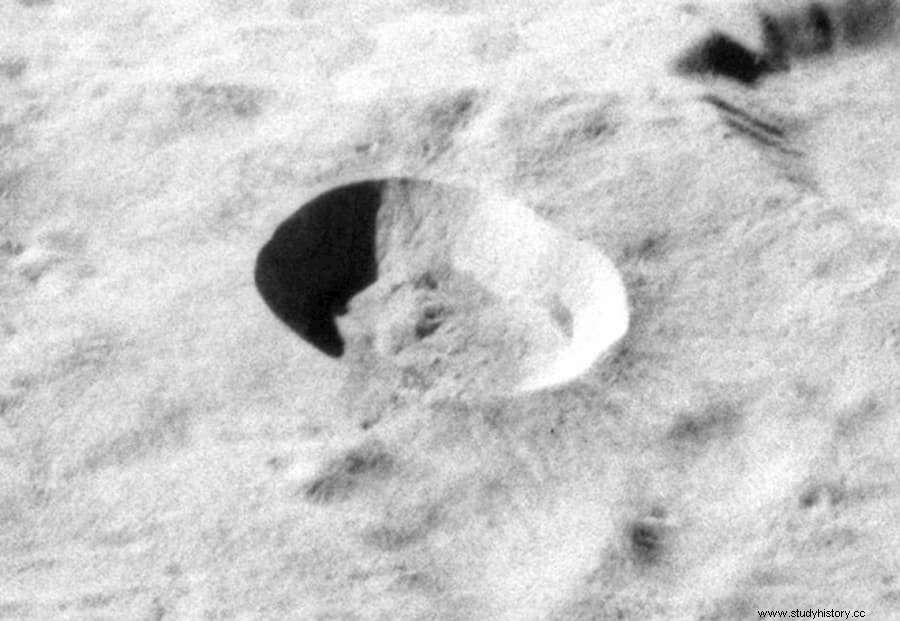On the afternoon of June 18, 1178, five monks from Canterbury, in the south of England, reported that they had witnessed an unusual phenomenon in the sky. According to the monk Gervasio, an abbey chronicler, the men were looking at a new crescent moon when they saw that the upper part split in two . Gervasio wrote:
Gervasio's narrative lay forgotten for centuries until Jack Hartung, a geophysicist at the State University of New York at Stony Brook, rediscovered it in the 1970s. Numerous astronomers have been interested in it ever since.
Hartung suggested that what these men witnessed was a meteorite or asteroid impact on the Moon, most likely the one that created the 22-kilometer Giordano Bruno crater. , since the time period of its formation would correspond to the date of the observed phenomenon.
But there are problems with this theory. On the one hand, the crater Giordano Bruno it could not have formed just 800 years ago. According to astronomer Tomokatsu Morota, the Giordano Bruno crater It is between one and ten million years old. Cosmologist Jörg Fritz also estimated the crater's age at more than a million years, adding that a crater as young as 800 years old would still show signs of its youth, such as elevated temperatures from the impact, none of which was observed in the crater Giordano Bruno .
Furthermore, an impact of such intensity would have kicked up a large amount of debris and triggered a blizzard or meteor storm toward Earth of up to a week's duration. If the men of 1178 had witnessed the formation of the crater Giordano Bruno , they should also have witnessed an intense meteor shower the following nights.
The fact that no one recorded what should have been a great fireworks display in any astronomy lore around the world, including European, Chinese, Arab, Japanese and Korean, indicates that the monks did not witness an asteroid impact. .
So what did the monks see? Paul Withers of the Lunar and Planetary Laboratory at the University of Arizona believes that the men simply saw a meteor explode in Earth's atmosphere in front of the moon's shadowed disk.

I think they were in the right place at the right time to look up into the sky and see a meteor that was directly in front of the moon, coming right at them Withers said. And it was a pretty spectacular meteor that burst into flames in Earth's atmosphere – fizzing, bubbling and crackling. If you were in the right one or two kilometer zone from the Earth's surface, you would get the perfect geometry. That would explain why there are only five people on record who have seen it.
But Withers goes further. He suggests that the men had seen nothing at all, because the moon was not yet visible from Canterbury on June 18, 1178. Perhaps the date was wrong? Or maybe the whole episode was made up?
Astronomical historian Peter Nockolds believes that Gervasio's story is complete fantasy. The alleged event took place during the time of the Crusades Nockolds explains. The Moon is a well-known symbol of Islam (the crescent moon currently appears on the flags of certain Islamic countries.) The Qur'an contains a reference to the division of the Moon (Surah 54:1). The phenomenon described by Gervasio could be interpreted as a harbinger of the defeat of Islam.
The monks used to associate the heavenly appearances with the Christian victories in the Crusades. Gervasio himself had linked the atmospheric phenomena of the previous year with the defeat of the Islamic armies. The lunar phenomenon described for June 18, 1178 could then be a piece of propaganda, holding out the prospect of Islam's defeat if Frederick Barbarossa, the Holy Roman Emperor, intervened. The truth will probably never be known.
This article was published on Amusing Planet. Translated from English with permission.
